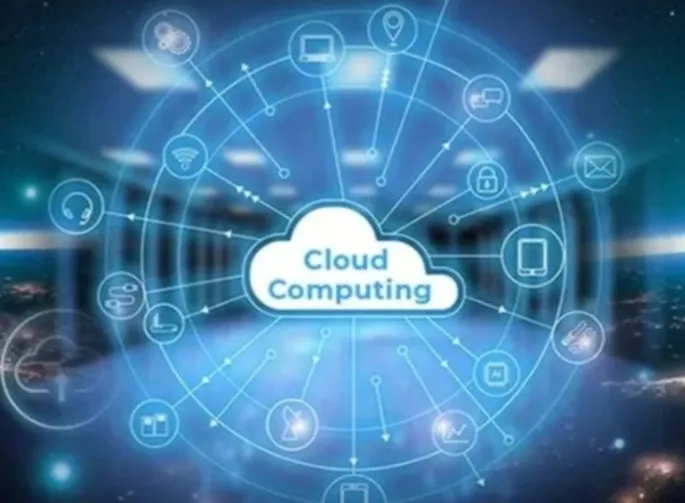The term “cloud computing” has permeated almost every discussion about modern technology. It’s the backbone of countless digital services, from personal file storage and social media to sophisticated enterprise software and powerful artificial intelligence platforms. While commonly used, gaining a precise and thorough understanding of the cloud computing definition is crucial to appreciating its impact and leveraging its capabilities effectively. The definition of cloud computing goes beyond a simple metaphor of data residing in the sky; it describes a fundamental shift in how computing resources are provisioned, accessed, and managed. It represents a move away from the traditional model of organizations solely relying on physical infrastructure located within their own premises towards consuming IT capabilities as flexible, on-demand services delivered over the internet. To truly understand “what is cloud computing?”, a deep dive into its core principles, distinguishing characteristics, and various models is necessary. This comprehensive guide aims to provide a detailed cloud computing definition, breaking down its essential components, explaining its various service and deployment models, and highlighting the significant advantages that stem directly from this transformative definition of cloud computing, offering a complete picture of its meaning and relevance in the digital age.
Toc
Deciphering the Cloud Computing Definition: What Does ‘The Cloud’ Mean?

At the core of the modern digital landscape lies cloud computing, a concept whose precise definition is vital for navigating its complexities and harnessing its power. Unpacking the cloud computing definition reveals a paradigm shift in how technology is accessed and utilized, moving from ownership to consumption. Understanding “what is cloud computing?” fundamentally requires a clear grasp of its widely accepted definition.
Unpacking the Fundamental Cloud Computing Definition: Resources as a Service
The generally accepted cloud computing definition is that it is a model for enabling ubiquitous, convenient, on-demand network access to a shared pool of configurable computing resources (e.g., networks, servers, storage, applications, and services) that can be rapidly provisioned and released with minimal management effort or service provider interaction. In simpler terms, the definition of cloud computing is centered on accessing IT infrastructure, platforms, and software as services over the internet, rather than buying and maintaining them yourself. Think of the cloud computing definition as describing a utility-based model for technology – you consume what you need, when you need it, and pay based on your usage, similar to how you consume electricity or water.
This fundamental cloud computing definition highlights a departure from the traditional IT model where organizations made significant upfront investments in physical assets like servers and data centers. The cloud computing definition emphasizes accessing these computing capabilities remotely over a network. The cloud computing meaning is intrinsically linked to this service delivery concept – where computing resources are accessed remotely as consumable services from a provider, rather than being owned physical assets. The definition of cloud computing is about the transformation of IT procurement and management into a more flexible and agile service consumption model. Understanding this core principle is the crucial first step in comprehending “what is cloud computing?”. It defines the shift from owning infrastructure to subscribing to cloud computing services.
Core Traits: Characteristics Integral to the Cloud Computing Definition
A comprehensive cloud computing definition is further clarified by outlining the essential characteristics that distinguish cloud services from traditional IT. These attributes are not merely features; they are integral components that form the very structure of the cloud computing definition. Understanding these cloud computing characteristics is key to fully grasping the definition of cloud computing.
According to the National Institute of Standards and Technology (NIST), five fundamental traits are integral to the cloud computing definition:
- On-Demand Self-Service: This element of the cloud computing definition means users can provision computing capabilities (like server time or storage) unilaterally, without needing human interaction from the service provider. Resources are available instantly when requested.
- Broad Network Access: As part of the cloud computing definition, this trait emphasizes that capabilities are accessible over the network (typically the public internet) using standard client platforms (e.g., laptops, smartphones). Access is available from almost anywhere.
- Resource Pooling: This core component in the cloud computing definition signifies that the provider’s computing resources are pooled together to serve multiple users using a multi-tenant model. Different physical and virtual resources are dynamically assigned and reassigned based on demand. Users share the underlying infrastructure, though their specific resources are logically separated
- Rapid Elasticity: This key characteristic within the cloud computing definition means capabilities can be elastically scaled rapidly both up and down, in some cases automatically, matching resource allocation precisely to demand. To the user, the available resources appear virtually unlimited, providing elasticity cloud.
- Measured Service: The cloud computing definition includes that cloud systems automatically monitor and meter resource usage (e.g., CPU cycles consumed, data stored, bandwidth used). This provides transparency for billing and allows for optimization. This enables the pay-as-you-go cloud pricing model
These five characteristics are fundamental to a complete cloud computing definition. They describe the operational attributes that define cloud services and differentiate them from previous technology models, providing the necessary depth to understand “what is cloud computing?” by detailing its inherent cloud computing characteristics. They are the building blocks of the cloud computing definition.
Why Grasping the Precise Cloud Computing Definition is Crucial

Having a precise cloud computing definition is more than just technical jargon; it is crucial for practical reasons in the modern digital landscape. Clearly understanding the definition of cloud computing empowers individuals and organizations to make informed decisions about adopting and utilizing this technology effectively. The cloud computing definition provides the necessary framework for informed choices.
Firstly, a precise cloud computing definition is essential for accurately evaluating cloud service providers and their offerings. The market is filled with services marketed as “cloud,” but their adherence to the core characteristics outlined in the definition of cloud computing can vary. Understanding the true definition of cloud computing enables users to identify genuine cloud services that offer the promised scalability, flexibility, and pay-as-you-go cloud benefits, helping avoid solutions that might not meet the true cloud definition.
Secondly, a solid cloud computing definition is vital for developing an effective IT strategy. Knowing what cloud computing fundamentally is helps organizations determine which workloads are best suited for migration to the cloud, which specific cloud computing services align with their technical and business needs, and how to manage the transition and ongoing operations within the framework of the cloud computing definition. It influences decisions related to infrastructure investment, software choices, and the necessary skills for the IT workforce.
Furthermore, understanding the definition of cloud computing is paramount for addressing crucial areas like security and regulatory compliance. The nature of cloud computing, as described in its definition, involves shared infrastructure and global distribution, introducing unique security considerations (the shared responsibility model). A clear understanding of the cloud computing definition clarifies the respective security responsibilities of the cloud provider and the user, which is fundamental for implementing effective controls and meeting regulatory requirements related to data residency and privacy. Without a firm grasp of the definition of cloud computing, organizations risk misconfigurations, security vulnerabilities, and compliance failures. A precise cloud computing definition is the necessary foundation for successful cloud adoption and harnessing the benefits of cloud computing in a secure and compliant manner. It ensures a shared understanding of the cloud computing meaning.
2. https://sanduocpham.com.vn/mmoga-at-the-core-lets-define-cloud-computing/
3. https://sanduocpham.com.vn/mmoga-understanding-the-foundation-what-is-aws-cloud-computing/
5. https://sanduocpham.com.vn/mmoga-exploring-the-definition-of-cloud-computing-what-it-truly-means/
Expanding the Cloud Computing Definition: Models of Service and Deployment

To provide a more complete cloud computing definition, we must delve into the different ways cloud capabilities are packaged and delivered (cloud service models) and the various ways the underlying infrastructure can be structured and deployed (cloud deployment models). These models are critical components that elaborate upon the core cloud computing definition.
Service Delivery Models: IaaS, PaaS, and SaaS Within the Cloud Computing Definition
Within the comprehensive cloud computing definition, the delivery of capabilities is often broken down into three primary cloud service models, each representing a different layer of the IT stack delivered as a service. Understanding these models is essential for fully grasping the definition of cloud computing as they describe the different ways users interact with cloud resources.
-
Infrastructure as a Service (IaaS): This is a foundational aspect within the cloud computing definition.
- What it is: IaaS provides virtualized fundamental computing resources over the internet. It represents the core cloud infrastructure definition.
- Capabilities: Providers offer virtual machines (compute), storage (like block and object storage), and networking components as cloud computing services.
- User Control: Users manage the operating system, middleware, applications, and data running on these virtual resources.
- Relevance: It embodies the utility model at the infrastructure level, allowing users to rent raw computing power and storage on demand, forming a key part of the cloud computing definition. The IaaS definition focuses on providing virtual hardware.
-
Platform as a Service (PaaS): Another crucial layer within the cloud computing definition.
- What it is: PaaS provides a platform and environment for building, running, and managing applications without the user managing the underlying infrastructure or operating system.
- Capabilities: Providers offer application runtime environments, managed databases, development tools, and middleware as cloud computing services.
- User Control: The user manages their applications and data.
- Relevance: It abstracts away infrastructure and OS management, enabling developers to focus solely on coding and deployment, adding depth to the cloud computing definition. The PaaS definition centers on providing a development platform.
-
Software as a Service (SaaS): A widely recognized component in the cloud computing definition.
- What it is: SaaS provides complete, ready-to-use software applications delivered over the internet on a subscription basis.
- Capabilities: Providers manage the entire stack: infrastructure, platform, and the application itself, delivered as cloud computing services or cloud applications.
- User Control: The user primarily uses the application and manages their data within it.
- Relevance: It delivers fully functional applications directly to end-users with minimal management effort, making it a pervasive part of the cloud computing definition. The SaaS definition describes software consumed as a service.
Understanding these distinct cloud service models is essential for a complete cloud computing definition. They detail the various ways IT capabilities are packaged and consumed as cloud computing services, providing necessary layers of understanding to the core definition of cloud computing.
Exploring Deployment Architectures: Public, Private, and Hybrid Cloud Explained as Part of the Cloud Computing Definition

In addition to the service models, the cloud computing definition also encompasses different ways the underlying infrastructure can be deployed and managed. These cloud deployment models describe where the cloud infrastructure resides and how it is structured, adding crucial context to the definition of cloud computing.
-
Public Cloud: A primary architecture in the cloud computing definition.
- What it is: The public cloud infrastructure is owned and operated by a third-party cloud service provider and shared among multiple organizations (multi-tenant) over the public internet.
- Characteristics: High scalability, elasticity, pay-as-you-go cloud pricing, readily accessible to the general public.
- Relevance: It represents the most common form of cloud computing, emphasizing shared resources and broad accessibility, a core element of the cloud computing definition. The public cloud definition focuses on shared, internet-delivered infrastructure.
-
Private Cloud: Also integral to the cloud computing definition.
- What it is: The private cloud infrastructure is provisioned for exclusive use by a single organization. It can be managed by the organization or a third party dedicated solely to them.
- Characteristics: High control, dedicated resources, enhanced security options, elasticity within the dedicated infrastructure.
- Relevance: It allows organizations to leverage cloud characteristics while maintaining dedicated infrastructure for specific security, performance, or compliance needs, contributing to a complete cloud computing definition. The private cloud definition emphasizes exclusivity and control.
-
Hybrid Cloud: A crucial modern element within the cloud computing definition.
- What it is: A hybrid cloud is a combination of two or more distinct cloud infrastructures (private and public) that are bound together by technology enabling data and application portability.
- Characteristics: Balances control (private) with scalability and agility (public), supports workload mobility between environments.
- Relevance: It represents a flexible strategy that combines the benefits of private and public clouds, acknowledging diverse organizational needs and forming part of the comprehensive cloud computing definition. The hybrid cloud definition describes an integrated multi-environment approach
Understanding these cloud deployment models adds another essential layer to the cloud computing definition, clarifying how the underlying infrastructure is structured and managed. They build upon the foundational cloud computing definition and provide context for how cloud computing services are delivered in different environments.
The Interconnected Nature of Service and Deployment Models
A complete grasp of the cloud computing definition requires understanding that the cloud service models (IaaS, PaaS, SaaS) and cloud deployment models (public, private, hybrid) are interconnected. Cloud computing services are delivered within one or more of the deployment models. The full cloud computing definition encompasses this relationship.
For instance, Infrastructure as a Service (IaaS), as defined, can be consumed from a Public cloud (shared infrastructure) or implemented within an organization’s own Private cloud. Platform as a Service (PaaS) can likewise be offered by a Public cloud provider or deployed within a Private cloud environment. Software as a Service (SaaS) applications are most commonly delivered from the Public cloud, although a dedicated instance for a single enterprise might incorporate elements resembling a private deployment for that specific application. A Hybrid cloud inherently involves consuming cloud computing services from both private cloud and public cloud deployments.
1. https://sanduocpham.com.vn/mmoga-exploring-the-definition-of-cloud-computing-what-it-truly-means/
4. https://sanduocpham.com.vn/mmoga-the-foundation-of-modern-it-understanding-cloud-computing-aws/
5. https://sanduocpham.com.vn/mmoga-understanding-the-foundation-what-is-aws-cloud-computing/
The flexibility to utilize different cloud service models within various cloud deployment models is a key strength highlighted by the cloud computing definition. An organization might use SaaS for email (public cloud), PaaS for new application development (public cloud), and IaaS for running legacy systems (private cloud), all as part of their strategy derived from understanding the full cloud computing definition. This interconnectedness is a vital aspect of the cloud computing definition.
The Value and Impact Captured by the Cloud Computing Definition
Beyond the technical breakdown, understanding the cloud computing definition is crucial because it directly relates to the powerful benefits that drive its widespread adoption and impact. The advantages inherent in the cloud computing definition explain why it is such a transformative technology.
Core Advantages: Benefits of Cloud Computing as Derived from Its Definition
The fundamental attributes and models outlined in the cloud computing definition translate into significant advantages for organizations and individuals, effectively defining the core benefits of cloud computing.
- Cost Savings: The emphasis on pay-as-you-go cloud pricing and reduced capital expenditure within the cloud computing definition directly highlights cost savings as a major benefit. Organizations avoid large upfront investments in cloud infrastructure definition and pay only for resources consumed, enabling efficient use of budget.
- Scalability and Elasticity: The characteristics of rapid elasticity and elasticity cloud within the cloud computing definition mean resources can be scaled up or down quickly to match demand. This inherent scalability, defined by the definition, is a key benefit, ensuring applications perform optimally during peak loads and avoiding wasteful over-provisioning.
- Agility and Speed: The on-demand self-service and broad network access aspects of the cloud computing definition enable rapid provisioning and deployment. This speed and agility in accessing IT resources accelerate development cycles and allow businesses to respond quickly to market changes, a significant benefit flowing from the definition.
- Reliability and Availability: While not always the most explicit part of the basic cloud computing definition, major cloud providers offer highly reliable cloud computing services with built-in redundancy across multiple data centers. This enhanced reliability and availability is a major benefit derived from the robust cloud infrastructure described in the public cloud definition.
- Focus on Core Business: By offloading the management of underlying infrastructure (IaaS) or even platforms and applications (PaaS and SaaS), organizations can free up internal IT resources to concentrate on strategic activities and innovation. This ability to focus on the core mission is a key benefit stemming from the service models within the cloud computing definition.
These core advantages are inherent in the cloud computing definition and are the primary reasons for its global adoption, making the cloud computing definition synonymous with efficiency, scalability, and agility. The definition of cloud computing captures the essence of these benefits.
The Role of the Cloud Computing Definition in Enabling Digital Transformation

Beyond its immediate technical details, the cloud computing definition highlights its pivotal role in enabling digital transformation and powering modern technological trends. Understanding the cloud computing definition is crucial to appreciating its broader impact on business and technology.
The cloud computing definition, with its emphasis on flexible, scalable, on-demand resources and accessible cloud computing services, has been instrumental in enabling digital transformation across industries. It provides the foundational cloud infrastructure definition and services necessary for businesses to build new digital products, offer innovative services to customers, and optimize internal operations in ways previously limited by their physical IT capacity. The cloud computing meaning is intertwined with the ability to innovate rapidly and adapt quickly in a dynamic market.
Furthermore, technologies like Big Data analytics, Artificial Intelligence (AI), Machine Learning (ML), and the Internet of Things (IoT) rely heavily on the scalable compute, storage, and specialized cloud computing services that align with the cloud computing definition. The availability of these powerful capabilities on demand, as defined by the characteristics of cloud, has democratized access to advanced technology, allowing organizations of all sizes to leverage tools previously only accessible to large enterprises. The cloud computing definition thus describes the underlying enabler of much of the current technological revolution, embodying the cloud definition explained as a transformative force.
Applying the Cloud Computing Definition: Practical Steps for Adoption
While having a solid cloud computing definition is the necessary starting point, successfully embracing the cloud involves significant practical steps for organizations. Moving beyond simply knowing the definition of cloud computing requires translating that understanding into strategic planning and operational adjustments.
Applying the cloud computing definition involves rethinking IT strategy, procurement processes (shifting from buying assets to subscribing to cloud computing services), and financial planning (pay-as-you-go cloud budgeting). It also necessitates developing new skill sets within IT teams, shifting expertise from managing physical hardware to managing and optimizing cloud computing services within potentially complex deployments like hybrid cloud. Security becomes a paramount concern, requiring a deep understanding of the shared responsibility model cloud providers use and implementing robust cloud security measures to protect data within the framework provided by the cloud computing definition.
Selecting the appropriate cloud service models (IaaS, PaaS, SaaS) and cloud deployment models (public cloud, private cloud, hybrid cloud) based on specific workload needs, security requirements, and compliance obligations is a critical strategic decision guided by a thorough understanding of the cloud computing definition. Implementing and managing the cloud environment involves ongoing monitoring, cost optimization, and adapting to the continuous evolution of cloud computing services. Moving beyond the cloud computing definition is about operationalizing the concept to realize its full potential for efficiency, innovation, and business growth in the digital age. The cloud computing definition serves as the roadmap for this journey.
In conclusion, the cloud computing definition describes a model for delivering IT resources as on-demand services over the internet, characterized by attributes like on-demand self-service, broad network access, resource pooling, rapid elasticity (elasticity cloud), and measured service (pay-as-you-go cloud). A complete cloud computing definition also encompasses the various cloud service models (IaaS, PaaS, SaaS, providing different types of cloud services like cloud infrastructure definition and cloud applications) and cloud deployment models (public cloud definition, private cloud definition, hybrid cloud definition). Grasping this cloud computing definition is crucial for understanding the significant benefits of cloud computing, including cost savings, scalability, and agility, which are inherent in the definition. The cloud computing definition highlights its pivotal role in modern technology and business strategy. Moving beyond the cloud computing definition involves the practical steps of planning, implementing, and managing cloud computing services to leverage the cloud’s full potential. Understanding “what is cloud computing?” through its detailed cloud computing definition is the fundamental starting point for anyone engaging with this transformative technology.












